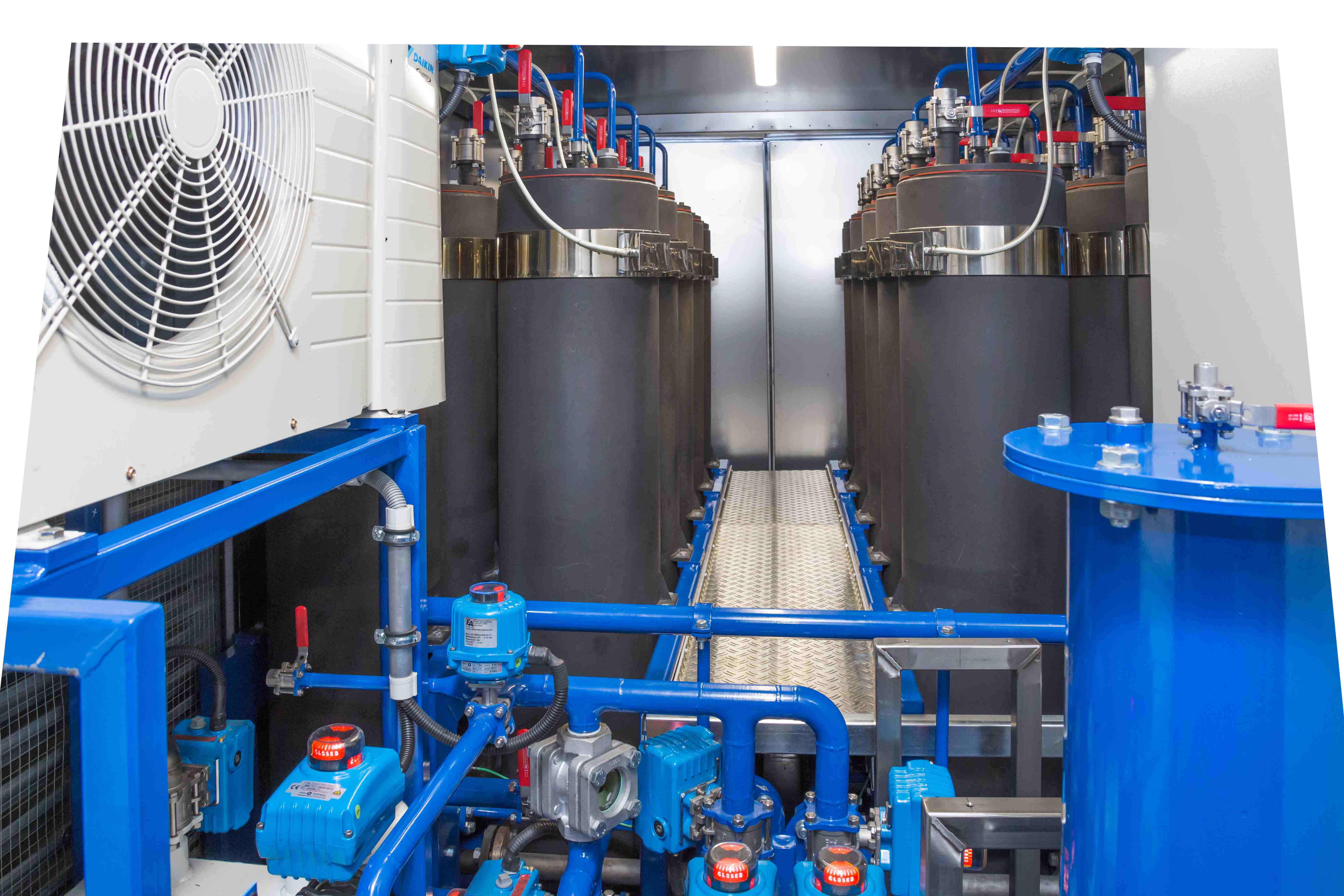What Makes Transformer Oil Regeneration a Sector Must-Have
What Makes Transformer Oil Regeneration a Sector Must-Have
Blog Article
Just How Regenerated Transformer Oil Extends Transformer Life Expectancy
The function of transformer oil is important in ensuring the reliability and durability of transformers, serving as both an insulator and coolant. Regrowed transformer oil uses an engaging remedy to boost these features by effectively removing hazardous pollutants that jeopardize performance.
Significance of Transformer Oil
Transformer oil plays a vital duty in the reliable procedure of electric transformers. It largely offers as a shielding tool, protecting against electric discharges and making certain that components run securely under high voltage problems. The oil's dielectric properties are fundamental to maintaining the honesty of the transformer, as they reduce the risk of failures that can bring about pricey downtimes or tragic cases.
Along with its protecting capabilities, transformer oil also operates as a coolant. As transformers run, they produce heat that has to be dissipated to protect against getting too hot and subsequent damage. The oil distributes within the transformer, soaking up and moving warm away from essential elements, consequently maintaining optimum operating temperatures.
In addition, transformer oil functions as a barrier versus moisture and impurities, which can jeopardize the efficiency and longevity of the transformer. Its chemical residential or commercial properties aid in reducing the effects of acids and other by-products that might develop with time, contributing to the total health of the electric system.
Benefits of Regenerated Oil

Additionally, regenerated transformer oil has a reduced level of impurities, including fragments and contaminants that can break down efficiency. This purity not only improves the oil's thermal conductivity yet also prolongs the functional life-span of transformers by reducing overheating dangers. The boosted thermal security of regrowed oil makes certain consistent performance also under high operating temperature levels, which is vital for maintaining transformer effectiveness.
An additional advantage is its environmental impact. Regenerated oil promotes sustainability by minimizing waste and the demand for brand-new oil manufacturing, thus reducing the carbon impact connected with transformer maintenance. Transformer Oil Regeneration Process. Additionally, the long life of regenerated oil translates to lower upkeep expenses over time, as fewer oil adjustments and much less constant equipment downtime are required.
Process of Oil Regeneration
The regeneration of transformer oil involves a systematic process made to recover the oil's initial homes and enhance its performance. This procedure commonly starts with the removal of the made use of oil from the transformer, which is after that subjected to various filtration strategies.
The very first step in the regeneration procedure is the purification, where solid contaminants such as dirt, metal, and sludge particles are removed. This is commonly complied with by vacuum purification, which assists to remove dampness and unstable compounds, therefore enhancing the oil's dielectric strength.

Impact on Transformer Efficiency
Restoring the buildings of regenerated transformer oil substantially influences the general efficiency of transformers. Improved dielectric toughness is among one of the most vital advantages, as it enables much better insulation and decreases the possibility of electrical breakdown. This enhancement leads to an extra stable procedure under high voltage problems, eventually bring about enhanced performance.
Additionally, the removal of impurities and check that degradation products during the regrowth procedure minimizes the danger of getting too hot. Cleanser oil helps with much better warmth dissipation, which is vital for keeping optimum operating temperatures. As a repercussion, the thermal efficiency of the transformer is improved, permitting higher tons without endangering integrity.
Moreover, the chemical stability of regrowed oil makes sure long term functional life. It stands up to oxidation and degradation, decreasing the frequency of maintenance treatments and oil substitute. This stability not just adds to boosted efficiency yet additionally straightens with sustainability objectives by decreasing waste.
Future of Transformer Upkeep
As advancements in technology proceed to improve the landscape of electric design, the future of transformer upkeep is positioned for significant change. The combination of clever technologies, such as IoT sensors and predictive analytics, allows real-time tracking of transformer wellness, boosting the capability to preemptively attend to problems before they escalate right into significant failings. This positive technique not only takes full advantage of operational effectiveness however also expands the life-span of transformers.
Additionally, the application of man-made intelligence (AI) in data evaluation permits more exact mistake detection and diagnosis. By leveraging artificial intelligence algorithms, maintenance groups can determine patterns in operational information that human analysts might ignore, leading to even more enlightened decision-making.
In addition, the adoption of environmentally friendly methods, consisting of using regenerated transformer oil, is readied to redefine maintenance procedures. This lasting method not just reduces ecological impact however additionally improves the general wellness of the transformer.
Finally, the change in the direction of automation in maintenance procedures is anticipated to streamline blog operations, reduce downtime, and reduced prices. As these developments remain to advance, the future of transformer maintenance will definitely become much more effective, reliable, and sustainable, making sure the honesty of essential electrical infrastructure.
Final Thought
The application of regenerated transformer oil significantly enhances the operational durability of transformers. By properly recovering dielectric strength and thermal stability, this oil plays a vital function in mitigating dangers related to getting too hot and oxidation. The regrowth procedure not just gets rid of harmful impurities but likewise decreases maintenance frequency and oil replacement expenses. Eventually, the fostering of restored oil stands for a crucial innovation in transformer upkeep, making certain optimum performance and sustainability in the management of electrical infrastructure.
The duty of transformer oil is important in making sure the reliability and longevity of transformers, offering as both an insulator and coolant.Transformer oil plays a vital function in the efficient procedure of electric transformers. Regenerated oil promotes sustainability by lowering waste and the requirement for new oil manufacturing, consequently decreasing the carbon footprint associated with transformer maintenance.Recovering the homes of regenerated transformer oil significantly influences the total efficiency of transformers.The utilization of regenerated transformer oil dramatically helpful site improves the functional durability of transformers.
Report this page